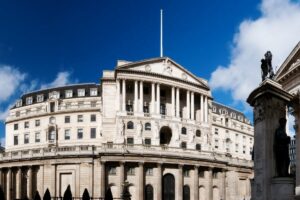Anna Stupnytska, Global Marco Economist at Fidelity International, comments on yesterday’s FOMC decision:
What happened?
“At the January meeting, the Fed took no policy action, in line with expectations. The Fed’s main objective this month was to communicate its next steps for the tightening cycle that is being kicked off this year. The statement provided new guidance on the lift-off which “will soon be appropriate” and on the balance sheet, with asset purchases now expected to end “in early March”.
“Notably, the statement also included new references to inflation “well above 2 percent” and a “strong labour market”. Clearly, inflation is the Fed’s prime concern right now, suggesting the bar for changing the hawkish narrative in the near term is exceptionally high. This is also helped by overall financial conditions which, despite the recent sell-off in equity and bond markets, remain extremely easy. This should allow the Fed to hike at 25bp increments 3-4 times this year.
“We also expect the balance sheet runoff to start earlier than in the previous episode – after one or two hikes – and to be steeper, at least initially. Assuming the ratio of QE to QT pace is held the same as before, the max runoff cap is likely to be about USD90-100bn per month for both Treasuries and mortgage-based securities, which is double the max cap seen in the last cycle. If started in the second half of this year, QT at this pace could last until 2025 if the Fed is to take the balance sheet to its pre-pandemic size of 20% of GDP. Risks are skewed towards a faster runoff if upside inflation surprises continue and financial conditions remain easy despite rate hikes – in that case, the Fed might need to be more decisive to protect its credibility.”
Our interpretation
“Having underestimated the breadth and persistency of inflationary pressures and having fallen significantly behind the curve as a result, it is now time for the Fed to protect its credibility as an inflation targeter. But how fast and how far this tightening cycle can go depends on a number of factors along the way, not least on the inflation dynamics and the terminal level of real rates the economy and markets can digest. While we believe 3-4 rate hikes and some balance sheet runoff is achievable in 2022 (though of course the balance sheet devil is in the detail), we are more sceptical on the tightening pace in 2023-24 that is currently priced in by the markets. With the debt burden so much higher after the pandemic, real rates have to remain in the negative territory for a long period of time, for the debt trajectory to stabilise at sustainable levels. Indeed, we believe maintaining negative real rates is currently the implicit policy objective of all major central banks. In this respect, the Fed’s policy action over the next few months is likely to be guided by real rates – a major shock resulting in positive real rates would likely lead to a more dovish stance. Ultimately, this tightening cycle is unlikely to be much steeper or longer-lasting than the last.”

















